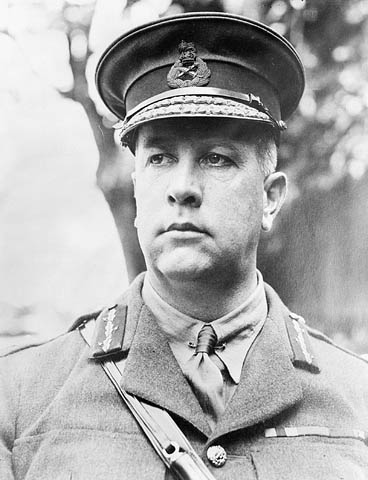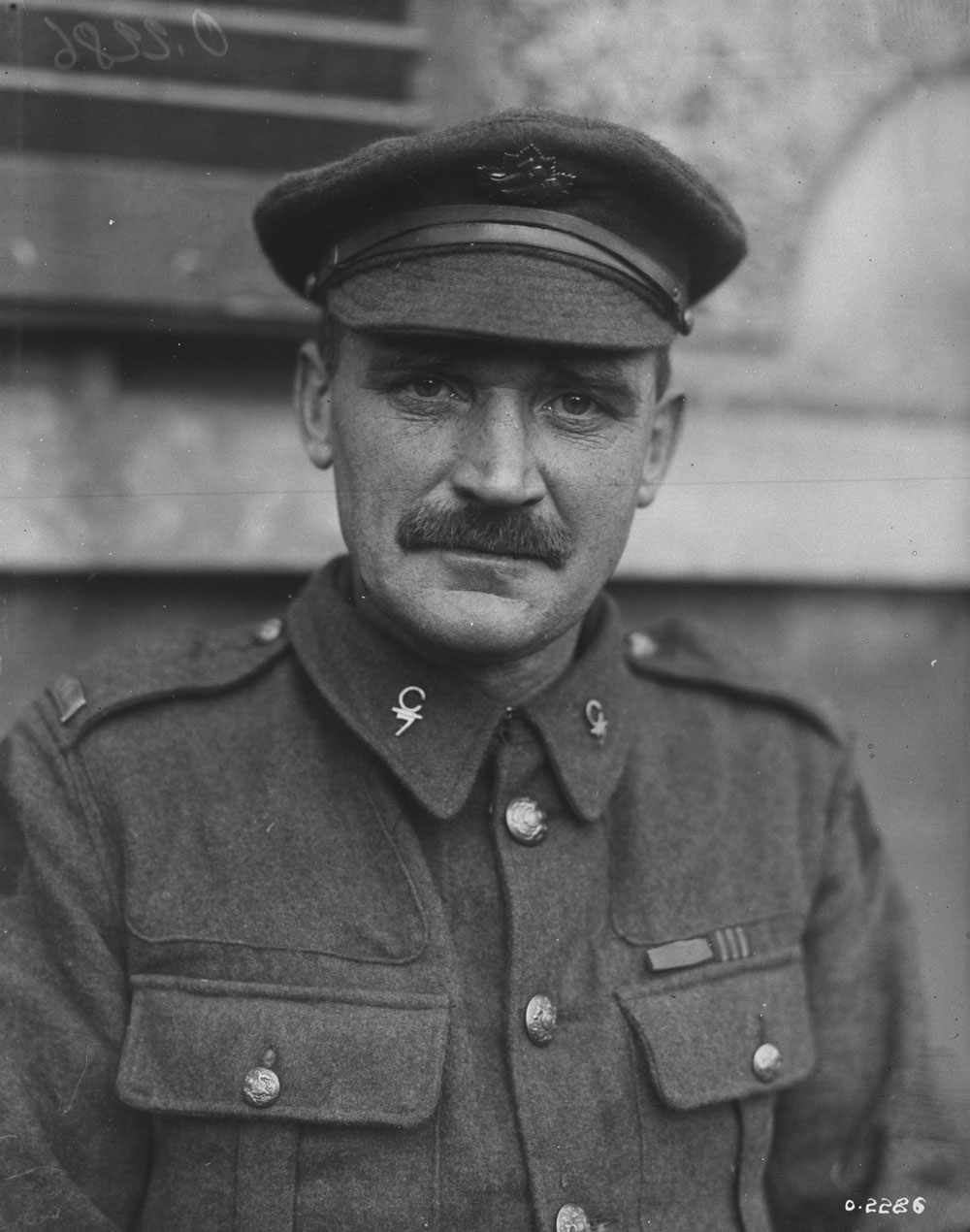Vimy Ridge
All Canadians learn about the Battle of Vimy Ridge, which began on 9 April 1917. It was the first action in which all four divisions of the corps fought. At the time, the corps was commanded by Lieutenant-General Julian Byng, a British General later promoted to command the British Third Army. (In the 1920s, as Lord Byng of Vimy, he was Governor General of Canada.)
Byng's senior division commander was Major-General Arthur Currie, who was a key planner for Vimy. Because of meticulous planning and rehearsing, recent technological advances and good leadership, the Canadian Corps succeeded where earlier French troops had twice failed. During a period with little other good news, the Canadian victory at Vimy received tremendous attention. It has since rightly taken on iconic significance for Canadians; it changed Canadian attitudes profoundly and set the stage for what was to come next.
But it was not uniquely Canadian, nor under Canadian control. Few Canadians know that of the 170,000 men in the allied attack on Vimy Ridge that day, only about 97,000 were Canadian. In some ways, it was not a Canadian battle, but a British battle with high Canadian content and a Canadian planner.

Currie Refuses Orders
Two months after the assault on Vimy Ridge, Currie was given command of the Canadian Corps. A month later, Currie received orders to attack and capture the small industrial city of Lens, somewhat north of Vimy. Currie refused. Had Currie been a newly minted British corps commander, he probably would have been sent home, but he wasn’t. General Byng and Field Marshal Haig, commander of all British Empire forces on the Western Front, both agreed with Currie’s reasoning, and counselled a rethink.

Why had Currie balked? For good reason. Currie had done his own examination of Lens and considered it a killing ground, as it was dominated by German artillery on the hill to the north-west. From that hill, the German gunners could see the entire Douai Plain, the flat coal-mining area east of the Vimy Ridge. Currie made clear that he would prefer to attack and capture the high ground first.
Currie’s view prevailed. Three days later, he received new orders to capture “the high ground NW of Lens”, which subsequently became known as Hill 70.
Battle for Hill 70
Between 15 and 18 August 1917, three divisions of the Canadian Corps (plus one in reserve) battled five German divisions and took and held Hill 70. The attack cost the corps some 3,500 casualties, and their clever and innovative defence against a massive counter-attack cost another roughly 2,200 casualties. But the Canadians held, and to this day, no one knows the German losses, but they are believed to have exceeded 20,000.
It had been a hard fight; six Canadians were awarded the Victoria Cross for their actions at Hill 70, compared to the four Canadians who received the award at Vimy Ridge. After that, Currie had new status. He was viewed as having superb judgement. Army commanders treated him carefully. Suddenly the Canadian Corps had become a national army, and not just another unit of the British Army.
National Canadian Army
The Canadian Corps was by this time larger and more powerful than most British armies, and each of the four Canadian divisions was equal to at least 1.7 British divisions. Haig even added to the impact of the 156,000 strong Canadian Corps by placing additional British divisions under Currie as well, for the last year of the war.
The successful battle for Hill 70 was the watershed. After that, the Canadian Corps was viewed as a national Allied army, and Currie as a national force commander.
The important decision taken during 7–10 July 1917 to focus Canadian effort on attacking Hill 70 — rather than launching a frontal assault on the city of Lens — was a crucial way station on the road to Canadian independence. The instrument was the resolve and insight of a former schoolteacher, insurance company manager and real estate speculator called Arthur Currie, who refused an order that was not in Canada’s interest. But his bold choice to protect his men would have had little ongoing impact if his judgement hadn’t been vindicated by the events of 15–18 August 1917, when the Canadians, under his command, won the battle for Hill 70. Victory at Hill 70 dramatically hastened Canada’s independence.
Currie and Borden
The successes of the Canadian Corps — beginning with Hill 70 and culminating with the Battle of Amiens and the subsequent Hundred Days campaign — achieved great recognition for Canada and a degree of autonomy for Canadian forces on the Western Front.
This in turn strengthened Prime Minister Robert Borden's hand to such an extent that, during the negotiations at the end of the war over the Treaty of Versailles, Canada was separately represented, and Borden’s role was critical on many provisions. Borden had set the stage for this throughout the war by his determined and effective efforts in pressing for a distinctive role for the Canadian Corps. Borden adroitly exploited Currie's push for a degree of autonomy to further the cause of Canadian independence. In this the military and political spheres were in perfect harmony.
(See also: Evolution of Canada's Shock Troops and Canadian Command During the Great War.)

 Share on Facebook
Share on Facebook Share on X
Share on X Share by Email
Share by Email Share on Google Classroom
Share on Google Classroom









